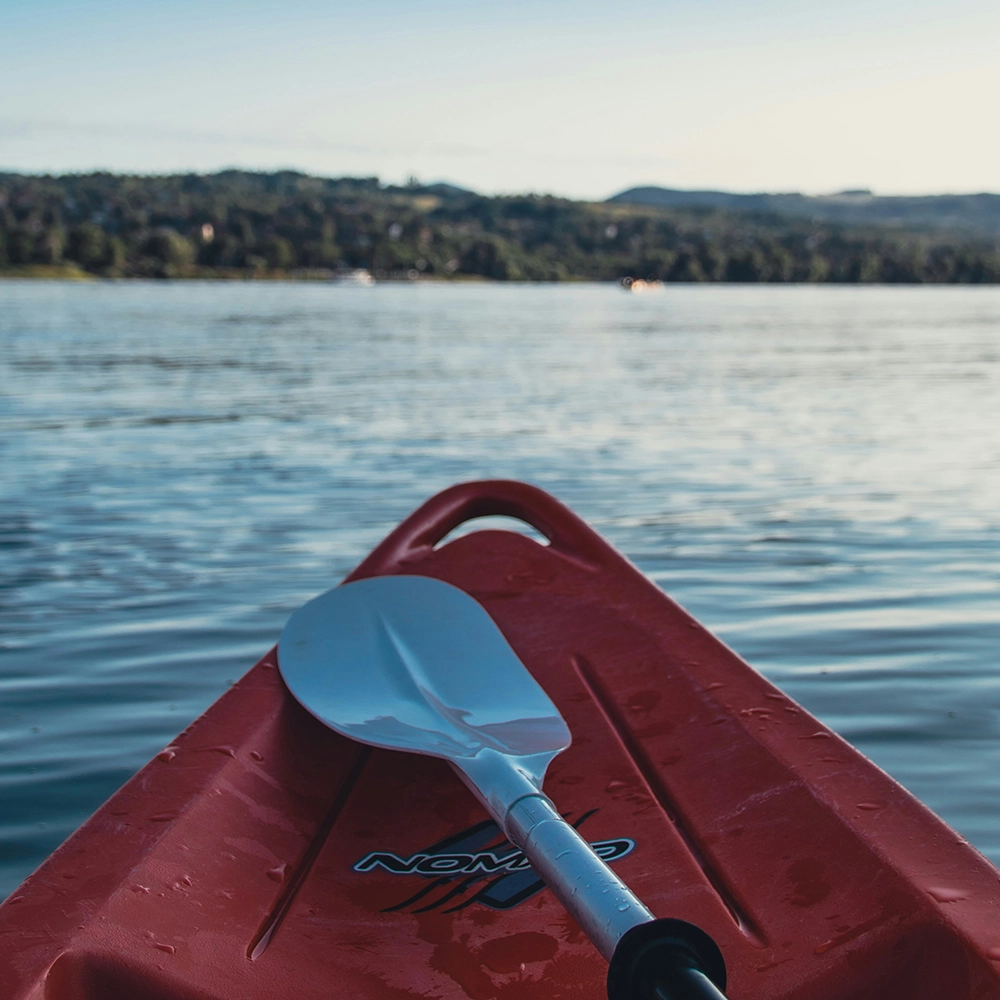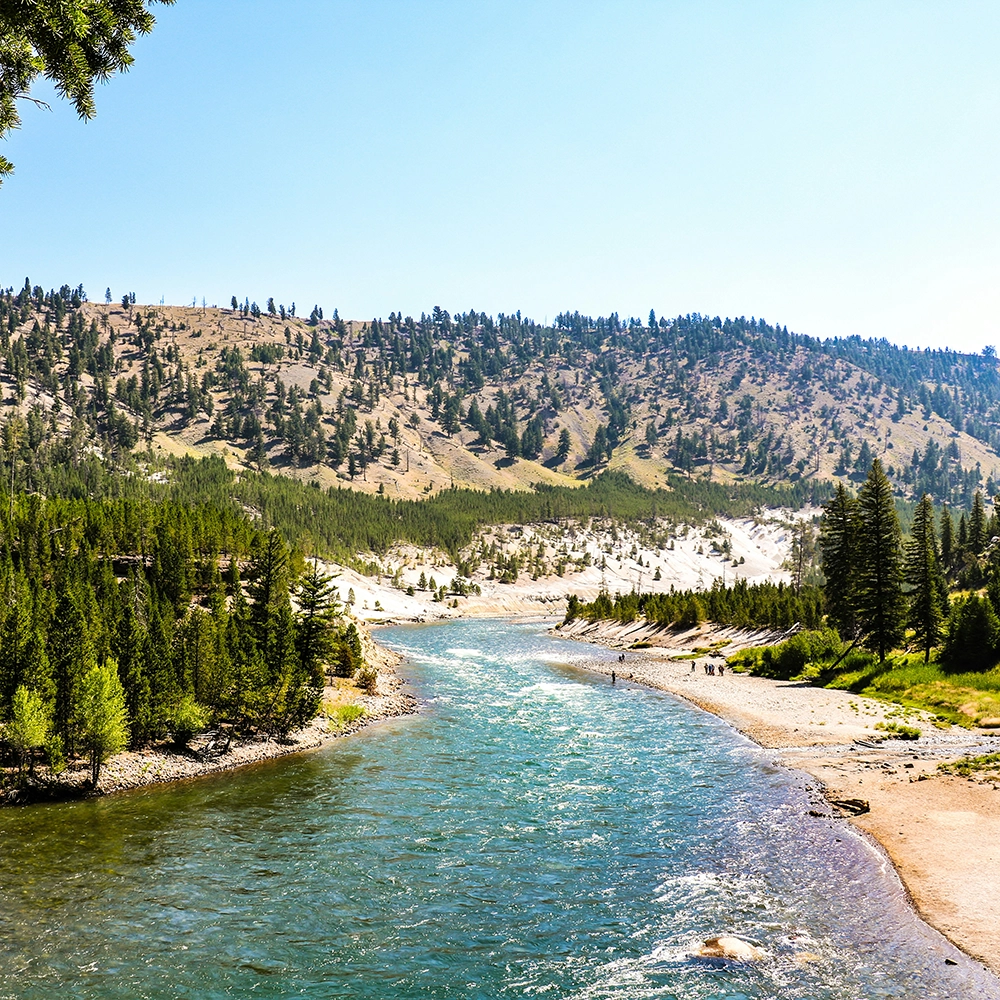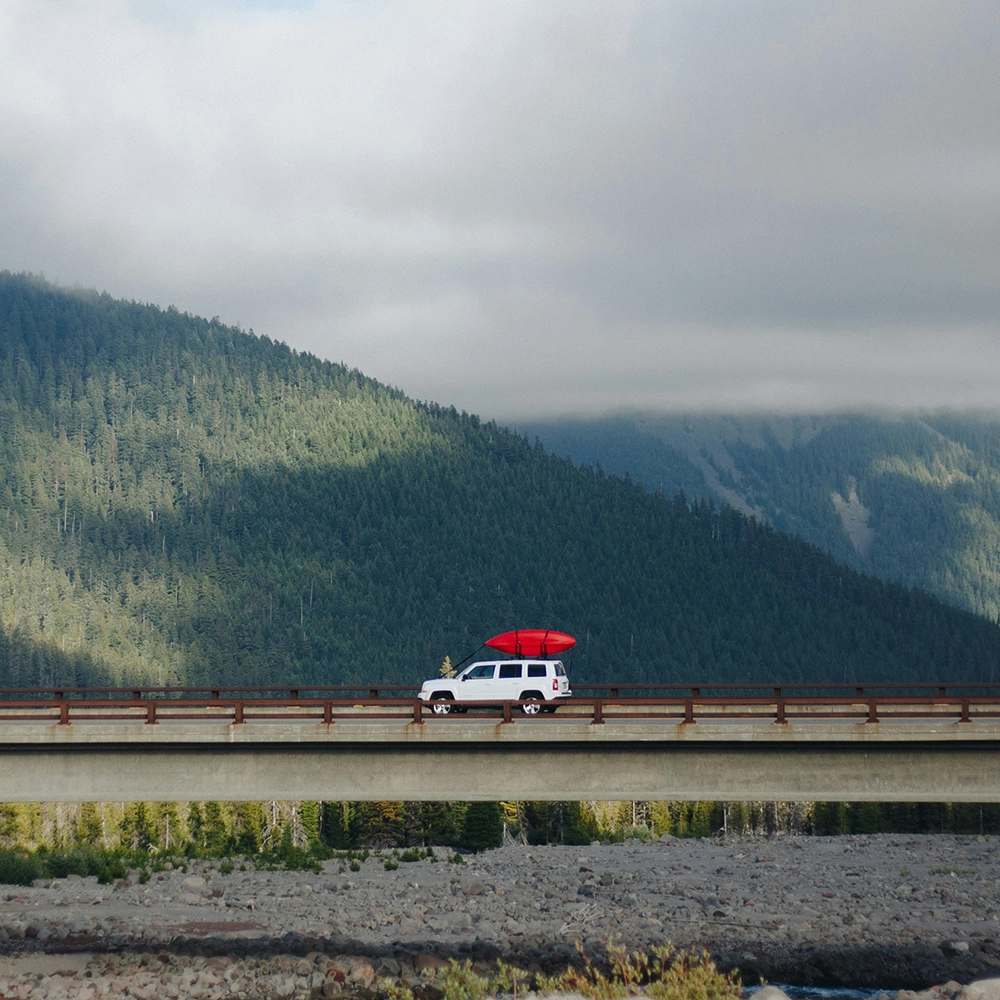It was supposed to be the trip of a lifetime. For years, my dad wanted to get backcountry permits to take a wilderness kayak trip from Lewis Lake to Lake Shoshone in Yellowstone National Park. After several attempts, he finally got them.
My dad is quite the character with a lot of travel and adventure stories. He met my mom in the Marshall Islands as a Peace Corps volunteer. He flew in prop planes over Mount Saint Helens' plume to broadcast live to a national radio audience. At 61, he still kayaks the Missouri River year-round, along with his daily routine of waking up early for a ski (in the summer, he uses roller skis).
As my Uncle Nikki puts it, "There's no one quite like your dad." After this trip, he’s someone who would know.
The Total Eclipse from Lake Jackson
For the summer in question, a big chunk of my large family and some old friends set up a base camp in Grant Village in Yellowstone National Park. We planned to take in the total eclipse from Lake Jackson, in the shadow of the Grand Tetons in Wyoming, before embarking on a kayaking trip.
In many cultures throughout the world, eclipses are seen as a bad omen. Whether you buy into that or not, it certainly seemed auspicious of what happened next.
Because of an old neck injury, I opted not to go on the wilderness kayaking trip. I was worried that days of kayaking could bring a flare up, which is not something you want to have happen in the wilderness. So I held down a basecamp in Grant Village while my dad, uncle, and our family friend Scott and his two sons launched their kayak adventure to Yellowstone’s Lake Shoshone.
Kayaking in Yellowstone
They first dipped their paddles in Lewis Lake, the last place where there is civilization. It was filled with the early elation of the start of an adventure, when the body feels energized and ready to take on whatever comes.
After the first few hours, the channel narrowed and the current picked up. A mile from Shoshone Lake, the stream became so shallow the party needed to get out and drag the kayaks through ankle-deep water the rest of the way.
Uncle Nikki isn't as outdoorsy as my dad and the rest of the crew, so he gave it his everything to keep up.
After an hour of intense labor, the crew emerged from the channel into the shimmering waters of Shoshone Lake to make their first night's camp on its southern shore.
Shoshone Lake is a backcountry lake in the southwest corner of Yellowstone National Park. It covers more than 8,000 acres, sitting at an elevation of nearly 7,800 feet.
"It was quiet," my dad recounts. "Peaceful, and with a sky full of stars. You realize you are the only person for dozens of miles, which is hard to do these days."
Disaster Strikes: Where's Nikki?
The next morning, they shoved off toward their second camp past the Narrows. With camp set, they jumped into their kayaks, sans gear, to paddle to the Shoshone Geyser Basin on the west shore.
Unlike the boardwalks and crowds surrounding Old Faithful, the Shoshone Geyser Basin has a much more primitive setting, much like it's been for thousands of years. There are 4 million visitors to Old Faithful every year, but only a few thousand make it out here.
While it took 90 minutes to paddle to the geyser basin, the party caught a stiff wind on the way back, effortless sailing on the return in 20 minutes. Everyone was filled with the joy of having embarked on the trip at all. In this day and age, it’s a rare opportunity to find yourself in such wild lands, and they knew it.
Although the day had gotten windy, creating four-foot waves on Lake Lewis, the group continued to enjoy the ride. There were just three miles to cross after the Narrows, at which point they’d reach their launch site from three days prior.
Because of the waves, the group separated for the first time during the trip. My dad reached shore first, followed by Scott and his two boys. That left Nikki on the water. Using binoculars, they could see his bright red kayak pulled into a cove.
Figuring Nikki was just waiting out the waves, the family friends packed up and started their long drive home to Montana. My dad, however, wondered what was taking so long for Nikki to round the cove and summoned help from the Lewis Lake Ranger Station.
What Happened to Nikki?
With the large waves that day, Nikki's kayak started taking on water. As it became more water-logged, Nikki tried to pump some of it out.
This was mistake number one. As he stopped paddling directly into the waves like he should have, his kayak was sideswiped by waves, taking on even more water.
Mistake number two was dropping his paddle. Once the kayak was too swamped to paddle, he gave up and dove into the lake, losing hold of his gear.
Because of the wind and waves, the others could not hear his initial shouts for help. He did not have a whistle to signal his distress. It was two miles from shore, and the water was 57°F. In water that cold, a person can lose consciousness from hypothermia in just two hours.
As he was deciding what to do, Nikki remembered a sign at the Lewis Lake boat launch that said, among other things, to stay with your boat if you capsize. He thought it was counterintuitive, but decided he had better follow the advice.
This was the first decision that likely saved his life.
Nikki kicked his legs, figuring he needed to stay warm, and swam with the kayak toward Highway 191, visible in the distance two miles from where he capsized. He could see the backup of cars from the construction to his east.
But the water was rough and cold, and remember, Nikki isn’t a seasoned outdoorsman. It was at this point that Nikki said he thought he might actually die.
Thankfully, even when he floundered, he stayed with his red kayak. That decision also likely saved his life.
Operation: Rescue Nikki
Back on shore, my dad continued to wait. He looked through his binoculars but failed to locate his brother's kayak. Wherever Nikki was, he wasn't where he was supposed to be.
He found a ranger who came with higher powered binoculars. She was able to just make out a red kayak in the middle of the lake.
"Can't confirm if rider is with boat," the ranger said.
"He must be," my dad said. "Because it is heading towards the highway, and that is not the way the current flows, so I am sure someone is swimming with the kayak."
A second ranger, this one heading south from the parallel Highway 191, spotted Nikki’s red and black hat. He radioed in confirmation that Nikki had been located, holding onto the kayak with his right arm. My dad prayed he'd get to see his brother alive again.
With this new information, the rangers dispatched a speedboat around the east cove and out of sight.
By now, Nikki had spent three hours in the 57° waters of Lake Lewis. Seeing an ambulance go by on the highway, he thought, “That must be for me. Or someone is in worse shape than I am right now!”
Towing him in, the two rangers in the rescue boat confirmed Nikki somehow was not in serious shock or hypothermia.
"What about the kayak?" Nikki asked.
"We'll come back for it," the ranger said. "We gotta get you to an ambulance."
Nikki protested. "My brother will kill me if I don’t bring it back.”
"Normally we leave the kayak and speed the patient back and come back for the kayak later," the ranger said, "but if you’re good enough to tell jokes, I'm determining your condition is not overtly serious."
They side-towed the kayak, put blankets on Nikki, and made it back to the Lake Lewis launch point in about 30 minutes.
Sunset in Cody: The Prettiest of Nikki’s Life
There was a reunion of relieved greetings and hugs. While Nikki spent an hour inside the super-warm Yellowstone Park Ambulance enjoying hot soup, my dad preheated his van and loaded all the gear, minus just the lost paddle.
The rangers wrote up an incident report, and Dad and Nikki offered handshakes, hugs, and warm thank yous to all the rangers.
"What an incredible job they did!" my dad said.
"Your tax dollars at work," the supervisor responded with a big smile. “This was a good day for them. They got their guy back alive.”
Two hours later, as sunset lit up the skies of Cody, Wyoming, we all enjoyed hot showers at the Holiday Inn and a final dinner together.
Nikki seemed a much different man than the guy he had been a week earlier. He was going through a tough stretch on life's road before the trip, but his brush with death gave him time to be grateful that he was still among the living.
The experience has given him a new raison d’etre, as the French would say, a story of survival in the Yellowstone backcountry.
Lessons Learned
The important takeaway for readers is knowing where things went wrong and how you can do things better to avoid such mistakes.
"As the trip leader, I take full responsibility for going across Lewis Lake solo and not staying together. I rationalized it would be fine and everyone knew where we were going and the conditions to avoid, if need be,” my dad said.
“Also, we had been through rougher conditions on day one, so after nearly 30 miles of paddling, floating or sailing, in wind, waves, fog and calm, I thought it would be easy to get back. I was wrong.
"We should have all waited for that squall to pass by and then proceeded as a group. We didn’t, and that is on me.
"We learn lessons in life," my dad continued. "I think we all learned something. We will remember this one, along with the eclipse, as two very special, pivotal moments for us in our time on earth."
Other takeaways for anyone in the wilderness: remember to follow the signs and warnings of authorities like rangers. Such people and posters are there to protect you, so heeding the advice might just save your life.
Travel Insurance for Kayaking
Should you get travel insurance for kayaking or camping trips? Absolutely.
Travel insurance can protect your money and belongings as well as your health. If you have to cancel your trip or come home early — maybe someone got hurt during your trip — you could be reimbursed for nonrefundable, prepaid trip expenses thanks to your travel insurance.
It is important to note that some travel insurance plans exclude adventure activities. Depending on the plan, the list of exclusions could include kayaking, backcountry hiking, or camping.
If you plan on participating in these types of activities, talk to a licensed agent. They can help you find the right coverage for your trip and customize your plan so that you have the protection you need to travel safely.



